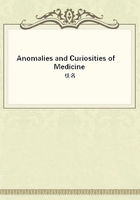
第419章
The moral effect of such a great pandemic plague can be readily surmised. The mental shock sustained by all nations during the prevalence of the black plague is beyond parallel and description. An awful sense of contrition and repentance seized Christians of every community. They resolved to forsake their vices, and to make restitution for past offenses; hence extreme religious fanaticism held full sway throughout Europe. The zeal of the penitents stopped at nothing. The so-called Brotherhood of the Cross, otherwise known as the Order of Flagellants, which had arisen in the thirteenth century, but was suppressed by the mandates and strenuous efforts of the Church, was revived during the plague, and numbers of these advocates of self-chastisement roamed through the various countries on their great pilgrimages.
Their power increased to such an extent that the Church was in considerable danger, for these religious enthusiasts gained more credit among the people, and operated more strongly on their minds than the priests from whom they so entirely withdrew that they even absolved each other. Their strength grew with such rapidity, and their numbers increased to such an extent daily, that the State and the Church were forced to combine for their suppression. Degeneracy, however, soon crept in, crimes were committed, and they went beyond their strength in attempting the performance of miracles. One of the most fearful consequences of this frenzy was the persecution of the Jews. This alien race was given up to the merciless fury and cruelty of the populace. The persecution of the Jews commenced in September and October, 1348, at Chillon on Lake Geneva, where criminal proceedings were instituted against them on the mythic charge of poisoning the public wells. These persecuted people were summoned before sanguinary tribunals, beheaded and burned in the most fearful manner. At Strasburg 2000 Jews were burned alive in their own burial-ground, where a large scaffold had been erected, their wealth being divided among the people. In Mayence 12,000 Jews were said to have been put to a cruel death. At Eslingen the whole Jewish community burned themselves in their synagogue, and mothers were often seen throwing their children on the pile, to prevent them from being baptized, and then precipitating themselves into the flames. The cruel and avaricious desires of the monarchs against these thrifty and industrious people added fuel to the flames of the popular passion, and even a fanatic zeal arose among the Jews to perish as martyrs to their ancient religion. When we sum up the actual effects as well as the after effects of the black death, we are appalled at the magnitude of such a calamity, the like of which the world had never seen before.
In the fifteenth and sixteenth centuries the plague was generally diffused throughout Europe, and in the latter half of the seventeenth century a final Occidental incursion of the plague took place. From 1603 to 1604 over 30,000 people perished in London from the plague, and in 1625 the mortality in that city amounted to 35,417 persons. But the great plague of London did not begin until 1664. In this plague the patient at first became sensible of great weariness and fatigue, had slight chills, nausea, vomiting, vertigo, and pains in the loins. The mental disturbance rapidly increased, and stupor and delirium ensued.
The face was alternately flushed and pallid, and a sense of constriction was experienced in the region of the heart. Darting pains were felt all over the body, soon followed by the enlargement of the lymphatic glands, or by the formation of carbuncles in various parts of the body. About the third day the tongue became dry and brown, and the gums, tongue, and teeth were covered with a dark fur, and the excretions became offensive;paralysis intervened; ecchymosed patches or stripes due to extravasation appeared on the skin; finally the pulse sank, the body grew cold and clammy, delirium or coma seized the victim, and in five or six days, sometimes in two or three, the painful struggle was at an end.
It was supposed that the disease originated in the Orient and was brought to London from Holland. In his "Journal of the Plague in London" Defoe describes its horrors, and tells of the dead-cart which went through the streets gathering the victims. A few extracts from Pepys's "Diary," the evidence of an eye-witness and a contemporary, show the ghastly aspects of this terrible visitation. On August 31st he writes: "In the City, this week, died 7496, and of them 6102 died of the plague. But it is found that the true number of the dead this week is nearer 10,000;partly from the poor who cannot be taken care of through the greatness of the number, and partly from the Quakers and others that will not have any bell rung for them." According to Adams, John Evelyn noted in his "Kalendarium":--"Sept. 7th.--Near 10,000now died weekly; however, I went all along the City and suburbs from Kent street to St. James's, a dismal passage, and dangerous to see so many coffins exposed in the streets; the streets thin of people, the shops shut up, and all in silence, no one knowing whose turn might be next."As the cold weather came on the plague diminished in intensity and the people regained their confidence and returned to the city. According to Adams, in the first week of March, 1666, deaths by the plague had decreased to 42; and by the end of the month it was nearly extinct after carrying off about 100,000victims. In our days we can hardly comprehend the filthy hygienic conditions under which the people in the cities lived, and it was probably to this fact that the growth and perpetuation of this plague was due.